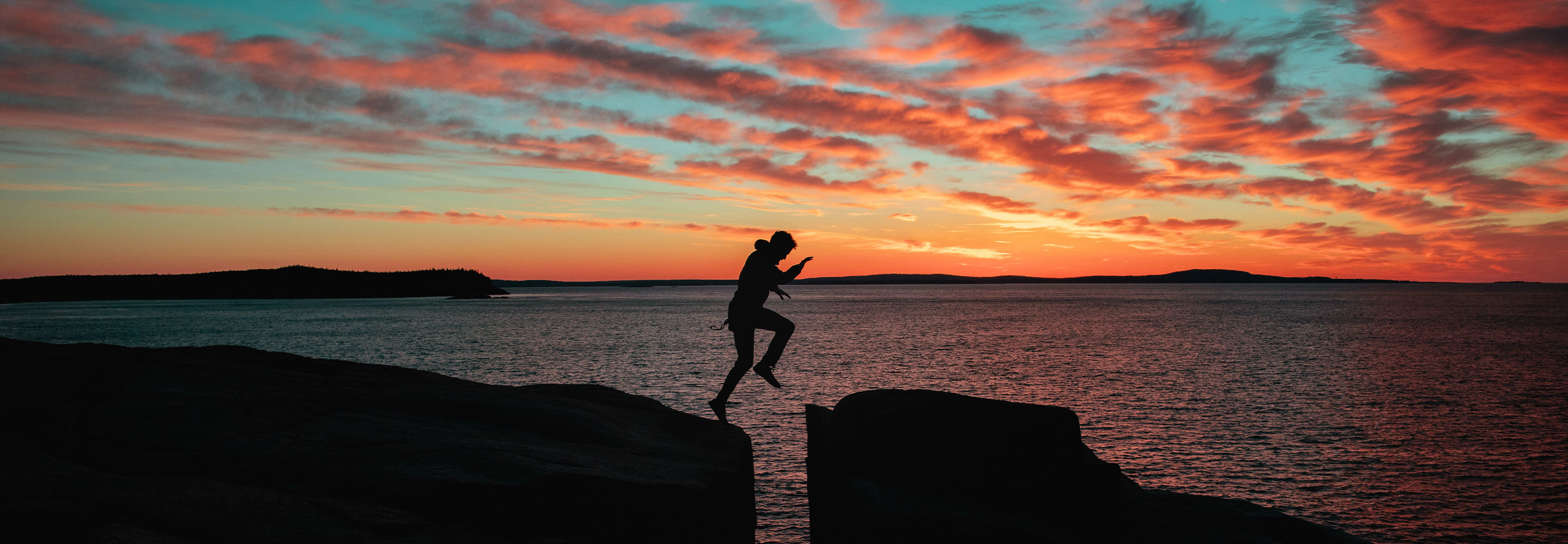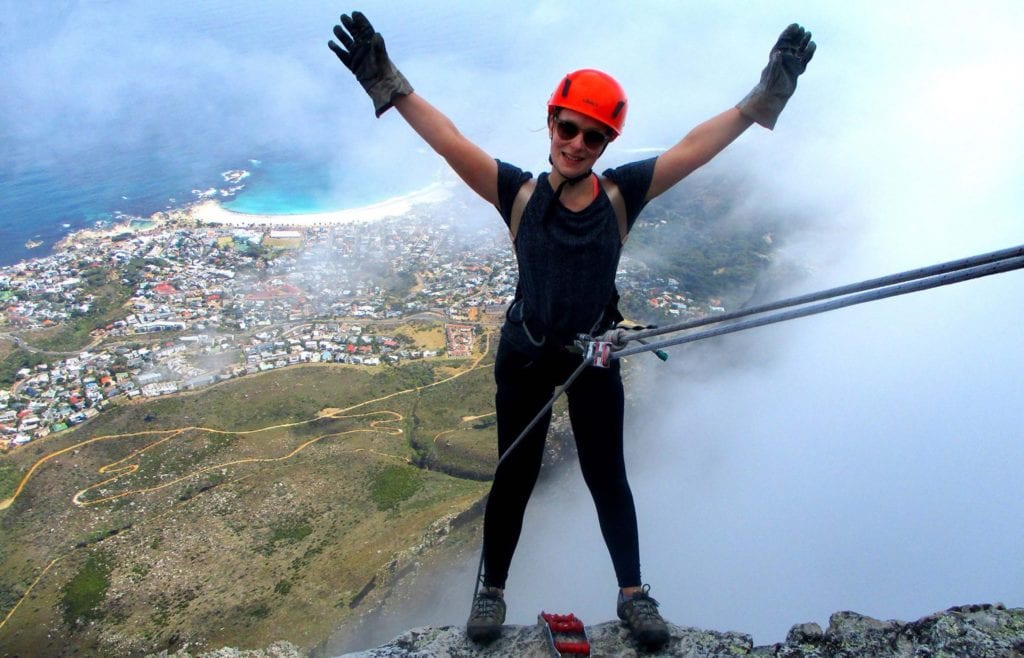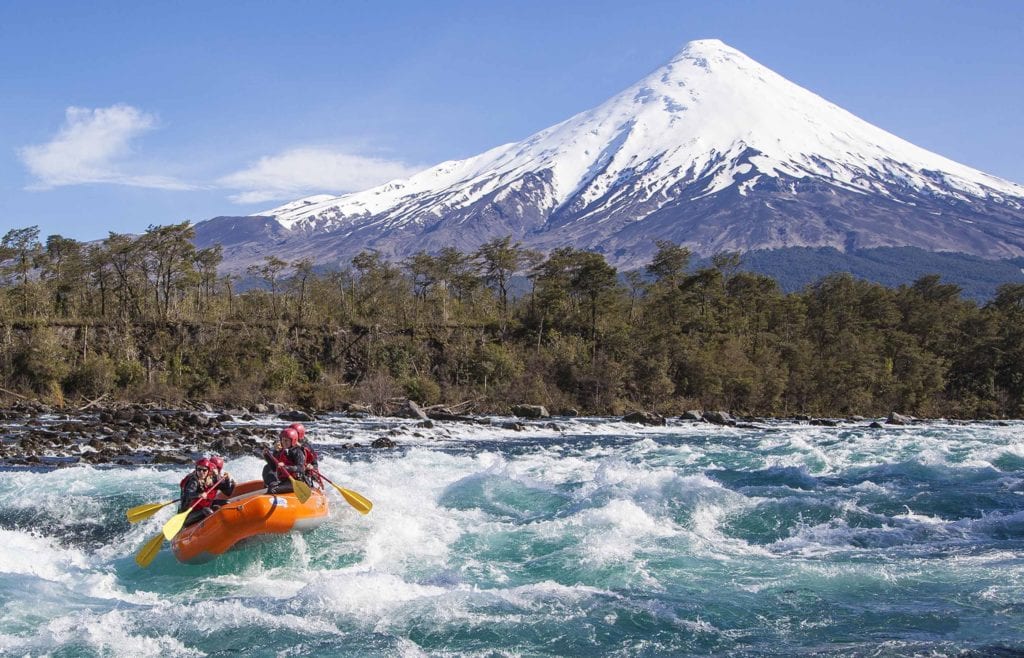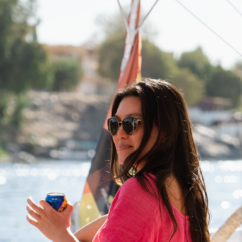Leave your comfort zone: how to face fear, by Ed Stafford

Hailed as “truly extraordinary” by Sir Ranulph Fiennes and “Britain’s most intrepid hero since Scott of the Antarctic” , adventurer Ed Stafford hit the record books after becoming the first man to walk the Amazon. The deadly journey took two and half years and, now a Discovery Channel documentary, ignited a career in solo adventure. Ed continues to travel and film all over the world, surviving in some of the most hostile environments on earth, for TV shows Naked and Marooned and Left For Dead to his upcoming series First Man Out.
This is Ed Stafford’s Flash Pack column, written once a month from somewhere remote and halfway across the planet. Probably. Over to Ed now, enjoy the read…
https://www.instagram.com/p/BfvJO-iD0bh/?hl=en&taken-by=ed_stafford
Feel the fear and do it anyway. Break free of your comfort zone. Push your limits.
As the mega-bestseller by Susan Jeffers suggests – there is a magic in fronting up to things that scare you and holding your own hand through the experience. I’ve never read her book of course – like many of these American self-help books the title is kinda useful – but that’s enough for me, no need to actually open it.
I’ve been in some hairy situations over the years, travelling all over the world. I’ve had guns and arrows prodded at my chest. I’ve been locked inside a UN compound in Afghanistan whilst the frenzied rioting mob outside decided to set it on fire.
I feel like I know fear quite well.
https://www.instagram.com/p/BhJ56nODNUU/?hl=en&taken-by=ed_stafford
But I’m not mentioning these incidents for bragging rights. Rather, I’ve become fascinated in the psychology of fear: how to deal with it, how to use it, and even how going through this whole process makes you grow into a wiser and more experienced person.
As a result, I’ve decided to write this month’s column on exactly that – drawing upon my experiences to give you 10 solid tips to face fear. This is all about breaking free of your comfort zone and pushing yourself to experience new things, something you might do a lot on a Flash Pack trip.
Hopefully these tips help – perhaps even when you’re staring down a 3,500ft abseil and wondering whether to take the leap of faith…
Tip One: re-brand fear as excitement
Whilst I was going through infantry officer training on the Platoon Commander’s Battle Course, we would all be put in “command positions” to put us in the spotlight and test our abilities to lead teams of soldiers in stressful situations.
The directing staff would then assess whether you were performing well – and if you weren’t – you would get “back-termed”, a horrendous situation akin to being held back a year at school for being stupid. Not good.
I would be terrified as we lined up that I would be selected as the platoon commander or the platoon sergeant. Keeping my head down in the role of a private soldier was much, much easier. But on one such occasion when the plump captain flipped open his notebook and read out, “Platoon Commander is… Officer Cadet Stafford”, the fear that I already held inside convulsed through me to the point of handicap.
I was in a spin from the outset and as a result I led a terrible anti-armour ambush where I placed my anti-tank weapons so close to the enemy tanks that they would not have armed (become live) by the time they hit their target. I.e. they would have hit the tanks with a metallic clunk and fallen to the ground impotently. Again, not good.
Schoolboy error, indeed, but it wasn’t because I didn’t know the facts. It was a direct result of being crippled by fear: my own fear of failing.
The failure taught me a lot and made me look at the behaviour of those who performed well. They looked like they were enjoying it – there was no apparent fear – the only difference seemed to be their approach.
So, I said to myself, “if you can’t get out of it – get into it!”
And I vowed that, from now on, I would look forward to being in a position of command. I would eagerly anticipate an opportunity to show off my skills. I would grin with delight at the surge of adrenaline that I knew would course through me as a direct result of the added responsibility.
And you know what? It worked.
By rebranding a terrifying situation as ‘exciting’, I shifted my whole interpretation of events to be positive and challenging rather than frightening and crippling. If you think back to a time when you were frightened, the physical feeling is remarkably like that of being excited.
I would argue that they are interchangeable, and you can take your pick which one you want it to be. I led with such ease that my personality shone through, too, and I started to enter the foothills of learning how to become a real leader.
When I do motivational talks now, for companies all round the world, I still use this trick as the fear invariably arises within me. “How are you feeling?”, my host will invariably ask just before I go on stage. I will smile to put them at ease and answer with one word, “excited.”
Tip two: make a stone circle
Okay, tip number one is fine and well, but there are some situations when the fear is so overwhelming that no semantics or rebranding are going to cut through the panic that has taken over you. For this, I need to draw on Australian Aboriginal advice.
Before I embarked on a 60-day survival experiment, alone on an uninhabited Pacific Island, I consulted some Aboriginal friends who gave me some straightforward but very handy tips on handling isolation.
All emotions seem to be hugely intensified when I find myself isolated, so one tip I was given was to make a small circle out of stones, just big enough to sit in cross legged, and to go and sit in it whenever I began to feel fear rising inside me. Inside the circle I would be safe I was told.
As soon as my toes felt the sand on the island of Olorua I began to panic. True isolation means taking responsibility for EVERYTHING.
https://www.instagram.com/p/BdQk-GlFMn_/?hl=en&taken-by=ed_stafford
When you have no food, water, knife or any means of surviving, that’s a huge responsibility and the inability to share that burden can send waves of terror through you. This indeed happened to me almost at once on the island and I found myself bent over with my hands on my knees retching.
And so, sooner than I had imagined, I found myself scrabbling for some rocks to make a circle. I cleared a patch of sand, laid out the four compass points and then infilled the spaces in between and I had a crude circle about the size of a space hopper. Dubious and full of fear, I felt daft as I lowered my naked bum (did I mention the experiment was naked?) into the circle and, for the first time on the island, looked up at the expansive horizon.
Immediately, and utterly unexpectedly, my shoulders relaxed.
I breathed deeply and saw the tranquillity of the pink evening sky. I even chuckled at the ridiculous nature of what I was doing and how it was working even on one of the most cynical people in a state of panic.
Somehow even the concept of boundaries in a world with no walls was comforting. The enormity of isolation had sent me into a spin and sitting in a simple circle of stones had calmed me down again. I kept that circle as a tool to help me get through the 60 days.
Tip three: use the fear
Remember that fear has a purpose.
In a situation such as being confronted by a life-threatening (if somewhat comical) hippo sniffing your fire ashes a couple of metres away, then the adrenaline produced will help you think fast. It will seem like time is slowing down (ever been in a car crash and experienced this?) but in fact your brain is working at high speed, processing all the different pieces of information to help you get yourself out of danger.
So, in this instance, don’t fight the fear – it’s happening to save your life. You won’t need to consciously do anything, as all of this will be done by you on ‘autopilot mode’. All you need to do is go with it and embrace it.
Tip four: trust yourself and take action
The opposite of using fear in an immediately dangerous situation is allowing chronic fear to hinder you and stop you doing the things you want to do in life.
Fear, as we know it in modern society, is normally a projection of a phantom event in the future. It’s impossible to know that the event will go well because it hasn’t happened yet, and your brain is imagining all sorts of negative outcomes and you’re building up an underlying fear of the future.
To combat this, you must tell yourself that you’ll be able to handle it when it arrives.
You must tell yourself that, up until this point in life, you have always handled everything that life has thrown at you (hence still being alive) and it’s unlikely that this situation will be any different. If possible – stop procrastinating and begin doing whatever it is that’s making you fearful.
Often the process of simply taking the first steps is enough to alleviate the worry.
Tip five: prepare well
In three months, at the end of the year, I have a brand-new challenge coming up.
I can’t disclose in this article what it is but it’s REALLY different. As the project is new to me, I can’t be sure how it will unfold and, to a certain extent, I know I must deal with whatever happens at the time and trust that I’ll be fine.
But, as this is easier said than done, one of the extra things I’m doing is to ensure that I’m as prepared as I possibly can be. Physically robust and with some extra self-defence lessons thrown in so that I know on day one, I’ll be as ready as I possibly can be to deal with any event.
Tip six: break the event down into its component parts
Everyone thought walking the Amazon was impossible. But, in my humble opinion, I think they were distracted by the sheer scale of the project: “The Amazon is so big that surely it’s impossible to walk,” they would say.
My alternative take was to break it down into individual days: “which individual day of this mammoth walk was impossible?” The answer of course was none – which meant that if I bolted them all together then the impossible just became possible.
Sure, on occasion I got scared due to being distracted by the vast scale of the project (like when we flew in over hour after hour of green trees on the flight in). But I soon learned that the quick way to get rid of the fear was to mentally go through the process of breaking it down into manageable chunks again that my brain could compute.
Tip seven: be prepared to die
Sometimes apprehensions can be there in the background but if you have a stronger emotion or value going on too then fear will have to take a back seat.
There were loads of times in the Amazon when my mates wrote me emails telling me to get my arse home as I was taking too much of a risk. In order not to let these emails spook me into giving in and going home, I just had to focus on the fact that if I went home I would have to face all the people that I’d told I was going to do this expedition.
I would have to look them in the eye and admit defeat.
This was completely unacceptable, and I knew that nothing in me would ever let myself get into that situation. I would prefer to die. It was as if my very identity was now resting on completion of the journey – and that was a much stronger emotion than the fear.
By acknowledging that I might die, it bizarrely made the risks easier to deal with. By looking at death and realising it was just one possible outcome, I just had to ask myself whether I was prepared to accept that it was a possibility. I was.
Cho [Ed’s co-adventurer, Gadiel “Cho” Sánchez Rivera] and I would laugh and say, “If we die, we die!” I would not have the same tactic today with a family – but, back then, as single men with no commitments, we both meant it.
Tip eight: treat it like a game
After leaving the Army I led expeditions for a jungle conservation charity called Trekforce. One of my responsibilities was teaching survival psychology and I wasn’t very keen on the British Army slant on how to stay alive: “because you have to!” It made no sense to me and seemed like it was written by a stuffy old colonel who just wanted to bark orders.
To me the potentially crippling thing that might happen to people in a survival situation was that they would freeze.
So, when the adrenaline kicks in, the age-old rabbit-in-the-headlights survival tactic causes some people to stop functioning. The reason for this, I felt, was that the consequences of getting it wrong was so big (death) that they didn’t want to try anything for fear of getting it wrong (and dying!).
So, my advice was to treat it like a game.
Imagine that you’ve been inserted into a computer game and your task is to amass stuff to help you survive and see how well you can do at building a shelter, lighting a fire, etc. The point is that, in a game, you can still fire on all cylinders, you can still channel the adrenaline in a positive way to get stuff done, but it’s done in a light-hearted positive manner that is conducive to action. And the fear slips away.
Tip nine: surrender
Acceptance is what is the key to a fear-free and stress-free life. To have the wisdom to know that there is no point in judging things and labelling them “good” or “bad” is to be free of trying to control things and to stress out that they are not how you want them to be or how they “should” be.
Surrendering to the simple wisdom that everything just ‘is’, will free you from not only stress but also a large amount of projected fear about stuff that might happen in the future. To trust that the universe is an inherently positive force (that you are an integral part of), that has your best interests at heart, is to save yourself a lot of wasted emotional energy.
Tip ten: meditate
“That’s all well and good,” you say, “but my mind is racing and there is too much going on and if I don’t think about the possible negative outcome of the event in the future then it might happen. Aaaaarggghh!!!!”
The biggest thing that has helped me over the years to fight depression, lead expeditions, thrive in survival situations, and live my life is to meditate. I can’t imagine life without it. To step back from your autonomous thoughts and emotions and to smile at the folly of the brain when it is on autopilot is to step up to another level of consciousness.
It’s liberating and once you’ve experienced the balance and peace there’s simply no other way to live.
No idea as to how to begin to meditate? Download the app Headspace. It’s meditation for cynics.
No joss sticks, to chanting, no sitting cross-legged (unless you want to). It’s just a toolkit for your mind and allows you to see fear as an insignificant transient emotion that comes and goes and is really nothing to get bothered about.
One of the quotes I’ve said in the past, that has been most quoted, is: “My greatest fear is not living my life.”
I stand by it today as being the very reason not to let fear stand in your way. If you wrap yourself in cotton wool you’ll be safe, and you may live longer, but will you have missed the chance to learn, to grow, to live the best life you possibly can?
Face the fear with these three Flash Pack challenges
Ready to put Ed Stafford’s tips into action? Get started with these three adrenaline-fuelled forays…
Canyon the Wadi Mujib, Jordan
Haul yourself over giant slippery boulders and navigate the twists and turns of the riverbed between the looming chasms of Jordan’s Wadi Mujib.
Abseil down Table Mountain, Cape Town

Tackle one of the world’s highest commercial abseils by inching your way over the summit of Table Mountain in South Africa, with Cape Town spooling out more than 3,000 feet below you.
Smash your comfort zone in South Africa
Fly over white water rapids, Chile

Battle the elements amid the churning current of Petrohué River in Chile, as you white water raft class IV rapids against the backdrop of the snow-capped Osorno volcano.
Images: Ed Stafford/Instagram, Shutterstock, Flash Pack






